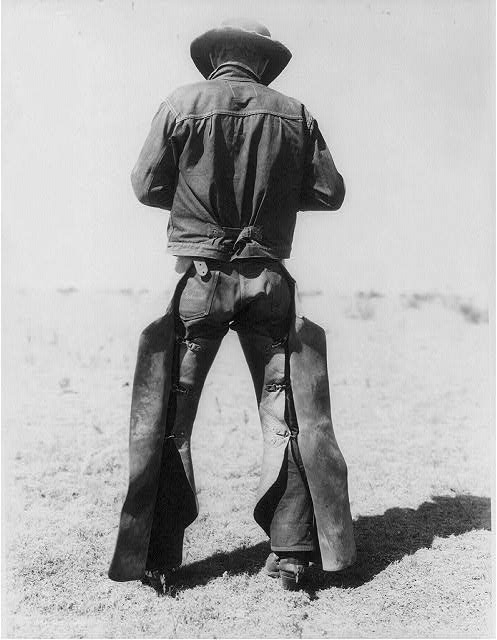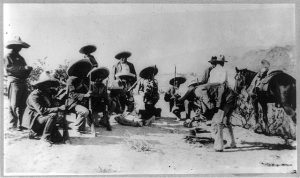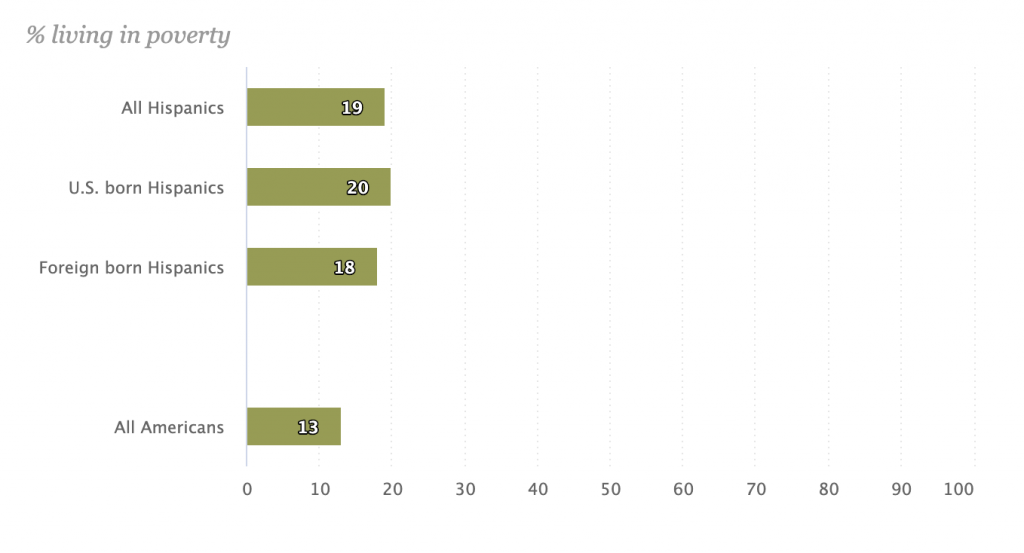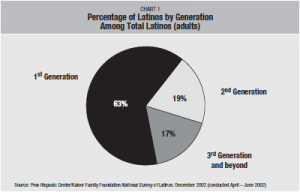The state of Texas is known around the world for its cowboy culture, barbecues and country music. It also ranks as the 3rd state with the highest percentage of Latinos — so how does this population fit into it all and what does it say about the upcoming presidential election?

Most people in the US describe Texas as conservative, traditional and home to the cowboys. They’re not wrong. It’s the largest state in the US which hasn’t voted Democratic for over four decades. Some Texans wear cowboy boots, hats and plaid shirts even when they’re not going to a rodeo. And yet, there’s also a strong presence of Mexican restaurants, Day of the Dead celebrations, and Taco festivals. So where do all these traditions come from?
To understand the origin and blend of these traditions, it helps to look back on two major groups that emerged before and during Texan independence:
-
- The Tejanos (now known in Texas as Mexican Americans): Mexican indigenous and Hispanic people inhabiting Texas before it was a part of the US, dating back to Spanish colonization 500 years ago.

-
- Texans: North American settlers who were welcomed and incentivized to live in Mexican-owned Texas 200 years ago.

*Note: The terms Latino and Hispanic are used interchangeably throughout the article to describe Latin American ancestry.
Tejano and Texan culture
It’s easy to attribute Mexican traditions in Texas to present-day Mexico. But it’s a little more complex than that — Mexican and more recent Texan traditions sometimes are one and the same. The cowboy is a clear example of this. When North American settlers (Texans) arrived in Mexican-owned Texas, they adopted aspects of the “Mexican Vaquero,” ranchers who were known for their roping, riding and herding skills. That Texas cowboy was later famously depicted in Hollywood films starring the Lone Ranger and Tonto. A strong marketing move that to this day shapes the way the US perceives Texas.
Even though there was a cultural difference between the Tejanos and Texans, there was also a commonality: they both wanted to become independent from Mexico. Tejanos didn’t agree with the Mexican president at the time (most Mexicans didn’t) and Texans didn’t share the cultural background to want to remain a part of Mexico. And in 1836 they succeeded. However, this didn’t play out very well for the Tejanos as it did the Texans.
Tejanos got the short end of the stick
It’s a tough part of history and not fun to read, but everyone, especially Mexican-Americans should be aware of these events and how they shaped the concentration of power in Texas today:
-
- From 1915 to 1919: Rangers killed hundreds, possibly thousands of Tejanos in South Texas. This was a surge of anti-Mexican mob violence in South Texas. It’s stuff you never learn about in Texas History class.
-
- In the early 1900s: Laws like “Juan Crow” enforced racial discrimination against Mexican Americans. In some cases, Tejanos were driven off their land at gunpoint. Texan landowners took advantage of the animosity toward Tejanos and used fear and intimidation to steal their land.

-
- In the late 1920s and early 1930s: The US carried out a wave of unconstitutional raids that affected as many as 1.8 million people. This was also known as the “Mexican repatriation.” Not taught in Texas history class either.
History is repeating itself today
Mexican and Central American immigrants are being deported in violent and non-humanitarian ways, with deportation camps showing locked up children and little regard for health rights. Often, the US government has simplified this story and described their actions as necessary and a “suite of policies meant to deter migrants and combat human traffickers.” Check out this timeline of how the Trump administration has responded to Latin American immigration in the past 4 years.
Tejanos hold voting and decision-making power
Remember when Obama ran for the presidency in 2008? Latinos had high hopes and helped Obama win his presidency with heavy support. Under Obama’s same administration, the country experienced the highest rate of deportations at record levels. 59% said they disapproved of Obama's deportation policies. Republican leaning groups have used this to convince Latinos to make the switch.
Though Mexican-Americans are a complex ethnic group with different political opinions depending on the time frame they either grew or immigrated to the US, there’s one thing that can be held true: they’ve become a large part of the population with 50.7 million Latinos in the US, out of which 65% are of Mexican origin.
The population of Texan regions like the Rio Grande Valley near the border is close to 90% Latino. This part of the country is not used to getting attention with years of state party neglect and local party ambivalence, yet just a few days ago the region was paid a visit by Democratic vice-presidential candidate Kamala Harris and national reporters around the country.
The Democratic party has realized the potential that Latinos hold in Texas, especially in concentrated areas like Rio Grande Valley where voter turnout has predominantly been low. Per latest numbers, more than 9 million Texans have cast ballots during early voting so far, surpassing the state’s total votes in 2016.
What it means for Mexican-Americans today
The acknowledgment of history allows us to move forward with smart action, and to defend against rhetoric that is convoluted. We often hear in pop-culture that the Latino community holds much promise for businesses and politicians because of their sheer numbers. The statistics say it all: there are 50.7 million Latinos in the US, out of which 65% are of Mexican origin. Yet we rarely hear about the complex makeup of Mexican-Americans, further causing internal division within the group.
Mexican-Americans although varying in the way they describe their cultural identity, tend to have a similar ethnic makeup. This is important because the Mexican-American and Latino ethnicity still suffer discrimination no matter how recent or further back they’ve lived in the US. As a matter of fact, studies show that later-generation Mexican immigrants have not integrated into American culture in the same way European groups have in the past. This can be attributed to racial and ethnic discrimination. The Migration Policy Institute is coming up with alternative frameworks for immigrants who continue to suffer discrimination with time. The findings so far show that new policies are the only way that can compensate for past effects.
The economic status of Latino immigrants vs. Latino US born individuals is very similar, and doesn't show any significant socioeconomic climb:

Who makes up the Mexican-American culture today?
Mexican-Americans are not necessarily recent immigrants, they’re also individuals who’ve lived in the present-US for centuries before it became the US. Some Mexican-Americans have lived in Texas for over 300 years, and at times have a hard time fitting into the more popular rhetoric of recent Mexican immigration. This has caused a spiraling effect of different generations wanting to dissociate from the popular rhetoric, and at times supporting conservative laws. Even laws implemented by Trump — the candidate who called Mexicans “rapists who bring drugs and crime.”
Although the number of Latino Trump supporters is small, the media still likes touching on this controversial topic, at times with little background information. Most recent surveys show that 63% of Latino voters would vote for Biden, while a much smaller 29% said they would vote for Trump.
“The lack of transparency of real events that have affected Mexican-Americans creates a dissociation from their root culture, and even goes so far as to create division within the group.”
The Mexican American generational divide
Third and older generation US-born individuals who consider themselves being of Mexican origin may still have varying cultural views than the first or second generation. This is how the US Census bureau separates generations in their polls:
-
- First-generation: Born outside the United States.
-
- Second-generation: Born in the United States to at least one immigrant parent.
-
- Third-or higher generation: Born in the United States to U.S.-born parents.
There’s just one little problem. Not all Latinos mark their Latino heritage in the polls, because their parents might be of different ethnicities. Generally, the polls don't frame the question “Where do your grandparents come from?” but rather “What’s your ethnicity and your country of origin?” Latinos will answer differently depending on what generation they come from.
Therefore, a distinction between immigrant status and ethnic origin status is one of the topics that cause internal division among Mexican-Americans the most. The third-or higher and second generation don’t always want to be "lumped in" with the first foreign-born generation. Even more dramatically, the third-or higher generation with ancestors who have endured harsh discriminatory laws don’t want to become associated with undocumented immigration -- a hot topic discussed in the context of the Latino community in the past few decades.
Out of all Latinos in the US, 67% are US-born and 33% are foreign born and the time period US-born Latinos arrived in the US extends through multiple generations and under very different conditions.
Ancestors of older third-plus generation Mexican-Americans most likely lived under colonial or Jim Crow-like conditions, while the offspring of more recent arrivals potentially benefited from the 1964 Civil Rights legislation. A result that we’re now finding in younger Mexican-Americans through grown cultural pride and the embrace of bilingualism.
There are many more 1st generation Latinos than 2nd and 3rd combined. One million Latinos turned 18 in 2018 and will continue to do so every year for the next two decades, which speaks a lot about how Latinos will shape voting power in the years to come.

Reality Check
American politics and businesses are reliant on Latino consumerism and participation. Latino population growth between 2000 and 2010 accounted for more than half of the nation’s population growth. That’s a huge number! And a record 32 million Hispanics were projected to be eligible to vote in 2020, a total that for the first time exceeds the number of Black eligible voters in a presidential election. Texas is the 3rd state with the most eligible Latino voters, representing 30% of the state’s voting population.
Now more than ever young Latinos need a voice and an explanation of their complex and at times very hidden history. And yet there is still much confusion in the makeup of this ethnic group, which really makes you wonder, who’s trying to keep it that way?
Latinos, make sure to vote!






